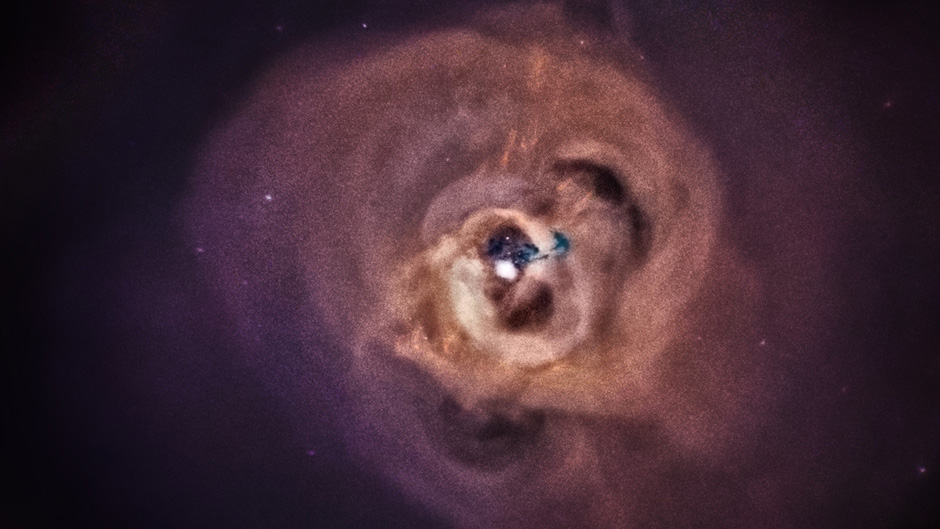Scientists built it to peer into the far reaches of outer space, with a mission to explore the nature of black holes, mysterious dark matter, and even the origins of the universe. But when Japan’s Hitomi satellite spiraled out of control only a month after achieving orbit earlier this year, astronomers thought all was lost.
Then came the news that made scientists like the University of Miami’s Massimiliano Galeazzi breathe a sigh of relief. In its short life, the doomed satellite had collected valuable X-ray data from a distant galaxy cluster—the kind of information astronomers had been waiting for years to obtain.
“Clusters are the building blocks of the universe,” said Galeazzi, associate chair and professor of physics in the University of Miami’s College of Arts and Sciences, who collaborated with the Japan Aerospace Exploration Agency (JAXA) and NASA to develop the systematic goals and strategies for the Hitomi mission. “Hitomi could measure much better than anything before it the energy or wavelength of the X-ray radiation coming from an astronomical object.”
With its next-generation X-ray instrument developed and built at NASA’s Goddard Space Flight Center by scientists from the U.S., Japan, and the Netherlands, Hitomi, which translates to “pupil of the eye” in Japanese, captured X-ray gasses emitting from the Perseus cluster, a collection of galaxies joined by gravity and located 240 million light years from Earth. The cluster radiates hot gasses, averaging 90 million degrees, which before were unmeasurable by astrophysicists.
Scientists studied the data captured by Hitomi and found that the hot gasses between galaxies within the cluster are moving at a slower speed and in a less turbulent manner than expected. Studying the movement and turbulence of gas is a vital tool for understanding the growth and parameters of the universe and how galaxies form and evolve.
“The level of details obtained by the investigation is breathtaking, showing the incredible power of the X-ray instrument aboard the Hitomi satellite,” said Galeazzi. “Although the satellite was lost prematurely, the instrument has revolutionized the field of X-ray astrophysics and paved the way for the next generation of X-ray telescopes.”
The X-ray instrument abroad the Hitomi satellite measured an array of emissions from the cluster such as iron, nickel, chromium, and manganese—elements apparent in the stars located in the cluster’s galaxies. The satellite’s data also showed that the gasses’ turbulent motion is practically nonexistent, which leaves scientists to wonder: what is keeping the cluster’s gasses so hot?
Andrew Fabian, an astronomer and astrophysicist at the University of Cambridge’s Institute of Astronomy, says, “This result from Hitomi is telling us that in terms of how cluster cores work, we have to think very carefully about what is going on.”
The X-ray data observed by Hitomi is an indication of the advances satellites can detect in the far reaches of space. The European Space Agency plans to send out a next-generation satellite in the 2020s named ATHENA, which will feature 100 times more pixels than Hitomi and be able to explore galaxy clusters and the relationship they play with massive black holes.
The findings from Hitomi’s data collection of the Perseus cluster were published in the journal Nature on July 7 and titled “The quiescent intracluster medium in the core of the Perseus cluster.”

